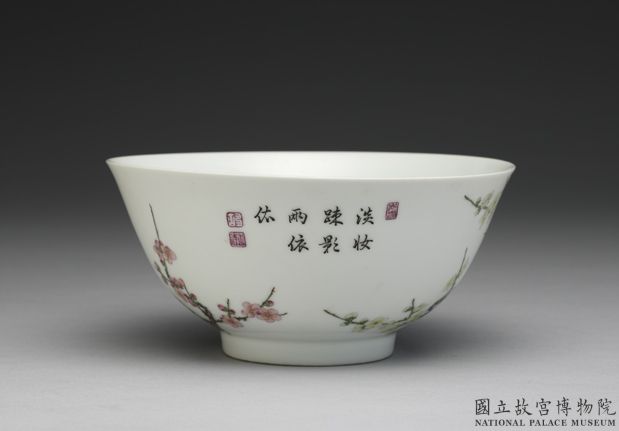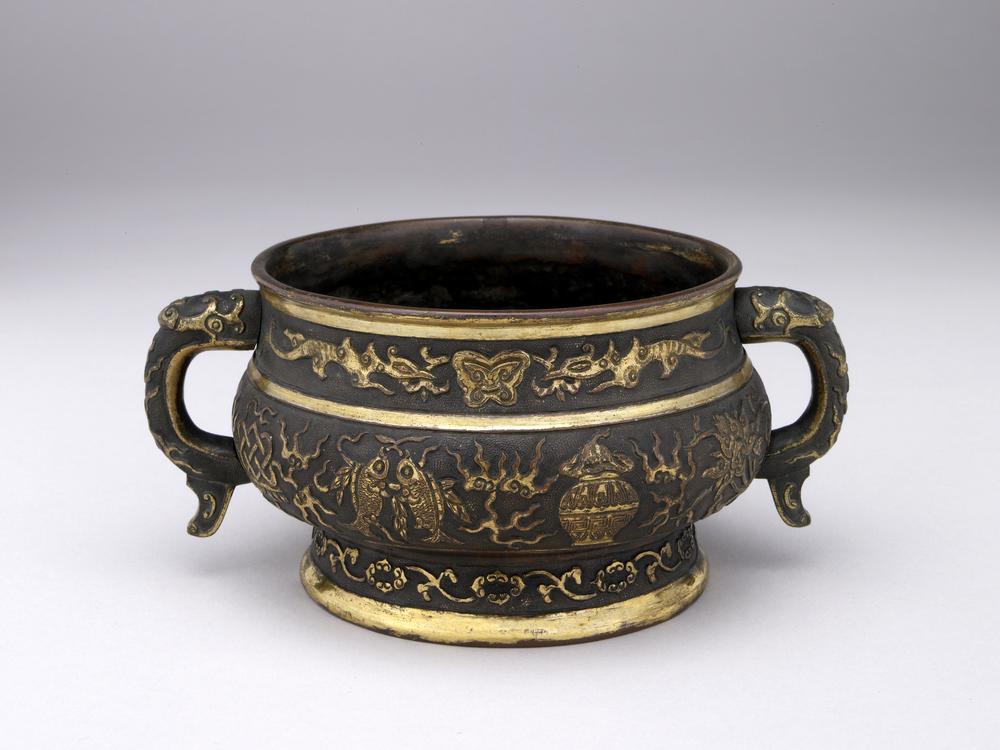Period:Unknown Production date:2007
Materials:titanium
Technique:
Dimensions:Diameter: 33.60 millimetres (dial)
Description:
Titanium cased radio-controlled solar-powered wrist watch. Titanium case with linked bracelet. Four push-buttons around the band for setting and mode selection. Charcoal grey dial with an outer circle for minutes, Arabic hours 1-12 also with an inner circle divided to seconds.All main calibrations are luminous painted. Between 5 and 7 o’clock a rectangular aperture has an LCD screen displating various modes. Luminous-painted baton hour and minute hands, arrow head centre-seconds hand. Complete with instruction book and original blue card box.
IMG
![图片[1]-radio-controlled watch; wrist-watch BM-2007-8011.1-China Archive](https://chinaarchive.net/Unknown/43/mid_P1010791.jpg)
Comments:Text from ‘Watches’, by David Thompson, London, 2008, p. 166-167.Casio Computer Company LtdTITANIUM CASED RADIO-CONTROLLED WRISTWATCH TOKYO, 2007While the quartz clock achieved previously unrivalled levels of accuracy, the story does not end there. At the same time that it was being developed as the new time standard, Isidor Isaac Rabi, working with other leading physicists, was investigating the properties of using beams of atomic particles as a frequency standard, based on earlier research by Otto Stern. In 1952 Jesse Sherwood, working at the National Bureau of Standards in America, successfully completed a new form of timekeeper based on the behaviour of atomic particles emitted from caesium isotope 133. After a visit to America to discuss progress being made there, Louis Essen, working with John V.L. Parry, developed an atomic beam clock, which was completed in 1955 at the National Physics Laboratories in England. The emission of particles passed though magnetic fields was measured at a frequency of 9,192,631,770 cycles per second and was found to be extraordinarily constant, producing an accuracy of one second in three hundred years. Subsequent developments have produced atomic clocks of staggering accuracy. The latest examples – caesium fountain clocks – have produced even greater stability, providing a new absolute for the definition of time. In 1967 it was internationally agreed that the standard unit of time henceforth would be based on the period of particle emission of the atomic clock.The idea of transmitting time signals for correcting clocks around the world originated in the nineteenth century with the use of telegraph signals. By the mid-1870s Greenwich Royal Observatory was providing time signals by telegraph to various locations in Britain, and by the early twentieth century the US Naval Observatory in Washington was sending a time signal by telegraph to 70,000 locations in the United States. With the advent of radio, the possibilities of time distribution widened further. As early as 1904, the US Naval Observatory began transmitting time signals by wireless telegraph. The first radio clock appeared much later, in 1952, and in 1977 the first public radio time signals were broadcast, first in Germany by the Braunschweig transmitter. In 1986 the first radio-controlled clock, the Junghans RCS1, went on sale. It was only a matter of time before the technology would be miniaturized for use in a wristwatch, and in 1991 the Junghans Mega1 was made available to the general public.Today it is possible to purchase a whole range of radio-controlled quartz watches. These contain a standard quartz watch, which is periodically corrected by a time signal sent from one of a number of transmitters around the world that broadcast time signals provided by atomic clocks. This example by Casio is one of the newest and has a light but robust titanium case and bracelet. The dial also functions as a photo-electric cell, generating the electricity necessary to power the watch, making the task of changing batteries a thing of the past. Although there is a battery for illuminating the dial. [PB].
Materials:titanium
Technique:
Dimensions:Diameter: 33.60 millimetres (dial)
Description:
Titanium cased radio-controlled solar-powered wrist watch. Titanium case with linked bracelet. Four push-buttons around the band for setting and mode selection. Charcoal grey dial with an outer circle for minutes, Arabic hours 1-12 also with an inner circle divided to seconds.All main calibrations are luminous painted. Between 5 and 7 o’clock a rectangular aperture has an LCD screen displating various modes. Luminous-painted baton hour and minute hands, arrow head centre-seconds hand. Complete with instruction book and original blue card box.
IMG
![图片[1]-radio-controlled watch; wrist-watch BM-2007-8011.1-China Archive](https://chinaarchive.net/Unknown/43/mid_P1010791.jpg)
Comments:Text from ‘Watches’, by David Thompson, London, 2008, p. 166-167.Casio Computer Company LtdTITANIUM CASED RADIO-CONTROLLED WRISTWATCH TOKYO, 2007While the quartz clock achieved previously unrivalled levels of accuracy, the story does not end there. At the same time that it was being developed as the new time standard, Isidor Isaac Rabi, working with other leading physicists, was investigating the properties of using beams of atomic particles as a frequency standard, based on earlier research by Otto Stern. In 1952 Jesse Sherwood, working at the National Bureau of Standards in America, successfully completed a new form of timekeeper based on the behaviour of atomic particles emitted from caesium isotope 133. After a visit to America to discuss progress being made there, Louis Essen, working with John V.L. Parry, developed an atomic beam clock, which was completed in 1955 at the National Physics Laboratories in England. The emission of particles passed though magnetic fields was measured at a frequency of 9,192,631,770 cycles per second and was found to be extraordinarily constant, producing an accuracy of one second in three hundred years. Subsequent developments have produced atomic clocks of staggering accuracy. The latest examples – caesium fountain clocks – have produced even greater stability, providing a new absolute for the definition of time. In 1967 it was internationally agreed that the standard unit of time henceforth would be based on the period of particle emission of the atomic clock.The idea of transmitting time signals for correcting clocks around the world originated in the nineteenth century with the use of telegraph signals. By the mid-1870s Greenwich Royal Observatory was providing time signals by telegraph to various locations in Britain, and by the early twentieth century the US Naval Observatory in Washington was sending a time signal by telegraph to 70,000 locations in the United States. With the advent of radio, the possibilities of time distribution widened further. As early as 1904, the US Naval Observatory began transmitting time signals by wireless telegraph. The first radio clock appeared much later, in 1952, and in 1977 the first public radio time signals were broadcast, first in Germany by the Braunschweig transmitter. In 1986 the first radio-controlled clock, the Junghans RCS1, went on sale. It was only a matter of time before the technology would be miniaturized for use in a wristwatch, and in 1991 the Junghans Mega1 was made available to the general public.Today it is possible to purchase a whole range of radio-controlled quartz watches. These contain a standard quartz watch, which is periodically corrected by a time signal sent from one of a number of transmitters around the world that broadcast time signals provided by atomic clocks. This example by Casio is one of the newest and has a light but robust titanium case and bracelet. The dial also functions as a photo-electric cell, generating the electricity necessary to power the watch, making the task of changing batteries a thing of the past. Although there is a battery for illuminating the dial. [PB].
© Copyright
The copyright of the article belongs to the author, please keep the original link for reprinting.
THE END





